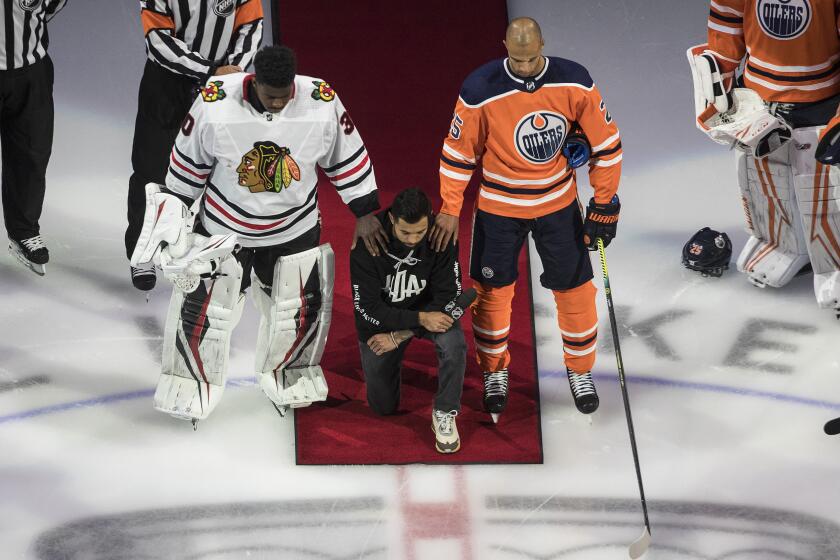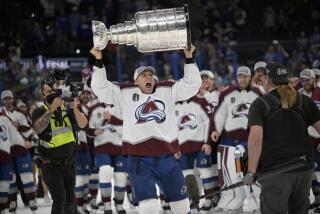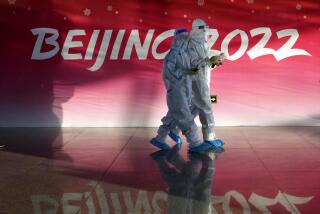Column: NHL continues to adjust on the fly in the COVID-19 era
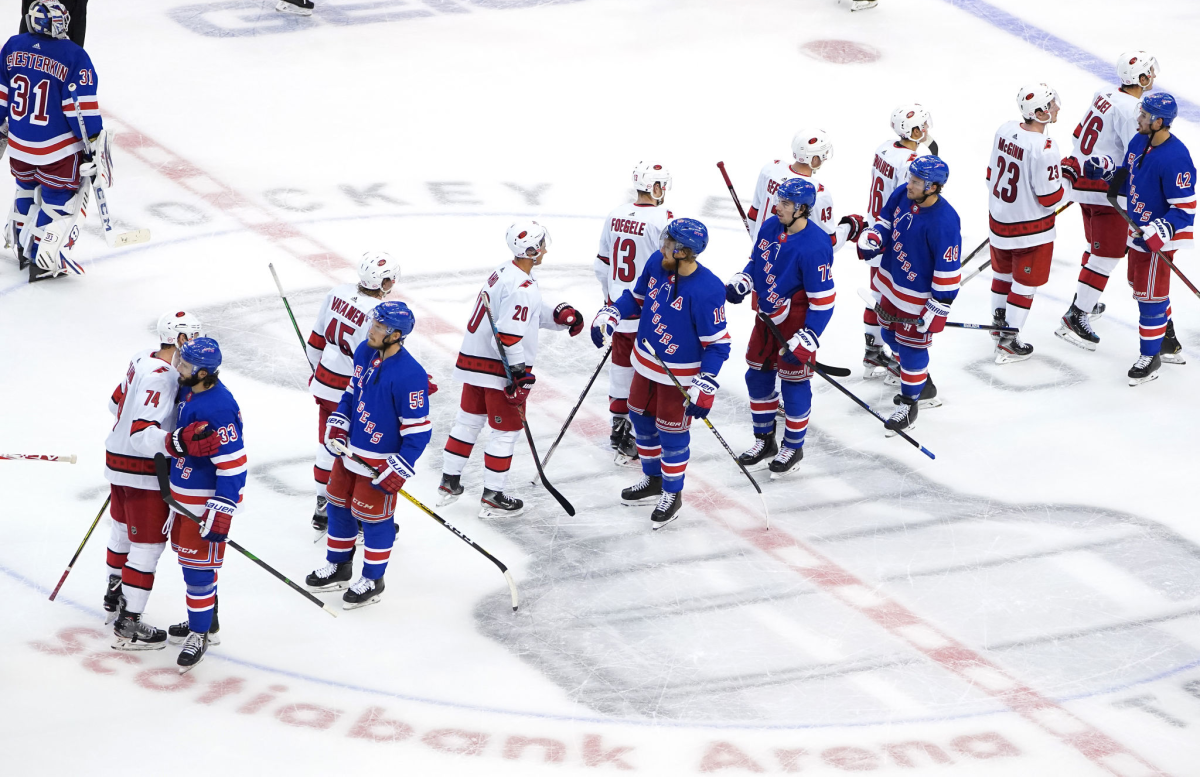
- Share via
At first, no one seemed sure what to do.
The Carolina Hurricanes had just swept the New York Rangers out of the qualifying round of the Stanley Cup playoffs, and tradition calls for players who have slashed and slugged and shouted at one another throughout a series to politely shake hands when it ends. But in this COVID-19 era, with the NHL staging games in empty arenas and sequestering players in bubble environments in Edmonton and Toronto, would it be safe to continue that custom?
Thankfully, players and coaches improvised ways to preserve a cherished ritual. After a moment’s hesitation the coaches bumped elbows, cues for players to bump gloved fists as they skated in opposite directions to dispense consolation or congratulations. Their gestures were familiar but new, a respectful nod to habits we took for granted before the novel coronavirus descended and changed the way we watch games and the way we live.
“It is surreal,” Carolina coach Rod Brind’Amour said of the scene, speaking during a Zoom news conference.
The NHL’s first venture into August hockey has been largely enjoyable, leaving fans puck-drunk by scheduling as many as six games a day. There have been electrifying hat tricks, young stars emerging, and the scary sight of former King Jake Muzzin taken off the ice on a stretcher after a freak collision left him with a back or neck injury. The good news is he was able to move his arms and legs, and he was released from the hospital after one night to return to the Toronto Maple Leafs’ team hotel.
Minnesota’s Matt Dumba became the first NHL player to kneel during the U.S. national anthem when he did so before the Oilers-Blackhawks game in Edmonton.
The league has had to be creative to bring energy to Toronto’s Scotiabank Arena and Edmonton’s Rogers Place. Video screens display teams’ fans back home, and the center-ice video board cheekily announced the attendance at zero and urged TV viewers, “At the conclusion of tonight’s game, please exit your couch safely.” Two NHL employees tossed hats onto the ice to hail Edmonton captain Connor McDavid’s three-goal game against Chicago.
There have been bumpy moments too. The non-elimination round-robin games, played among the top four teams in each conference for seeding in the first round of the Stanley Cup playoffs, generally were flat. The Bruins, No. 1 in the East when the season paused on March 12, and the West-leading St. Louis Blues lost their top rank. The ice in both arenas has become mushy under the stress of hosting three games a day, leading to unfortunate bounces and skipping pucks.
But the best-of-five qualifying series were often feisty, and the No. 12 seed upset the No. 5 seed in each conference, the Montreal Canadiens beating the Pittsburgh Penguins in the East and the Chicago Blackhawks taking out the Edmonton Oilers in the West. “We were definitely all motivated going into this series,” Montreal goaltender Carey Price said via Zoom after his series-clinching shutout. “Nobody was giving us a prayer to beat them and that definitely played a factor into it.”
The moment unlikely combatants Justin Williams of the Hurricanes and Ryan Strome of the Rangers squared off in their series opener, players went from no action in four-plus months to a fierce focus.
“I think the biggest concern I had coming into this was how is it going to play out without the emotion of the crowd,” Brind’Amour said. “I think NHL hockey is the best live sport out there, and it’s because of the fans. You’ve got to give the players a lot of credit. They’re competitive as ever. Whether it’s in front of 20,000 or nobody, when the puck gets dropped these guys come to play.”
The NHL mandates social distancing off the ice, but it’s impossible to avoid contact and percolating emotions during play. Players are going nose-to-nose in scrums and, as usual, occasionally tussling. Deputy commissioner Bill Daly said via email that fighting wasn’t specifically addressed when players were given “general warnings and precautionary recommendations” before play began.
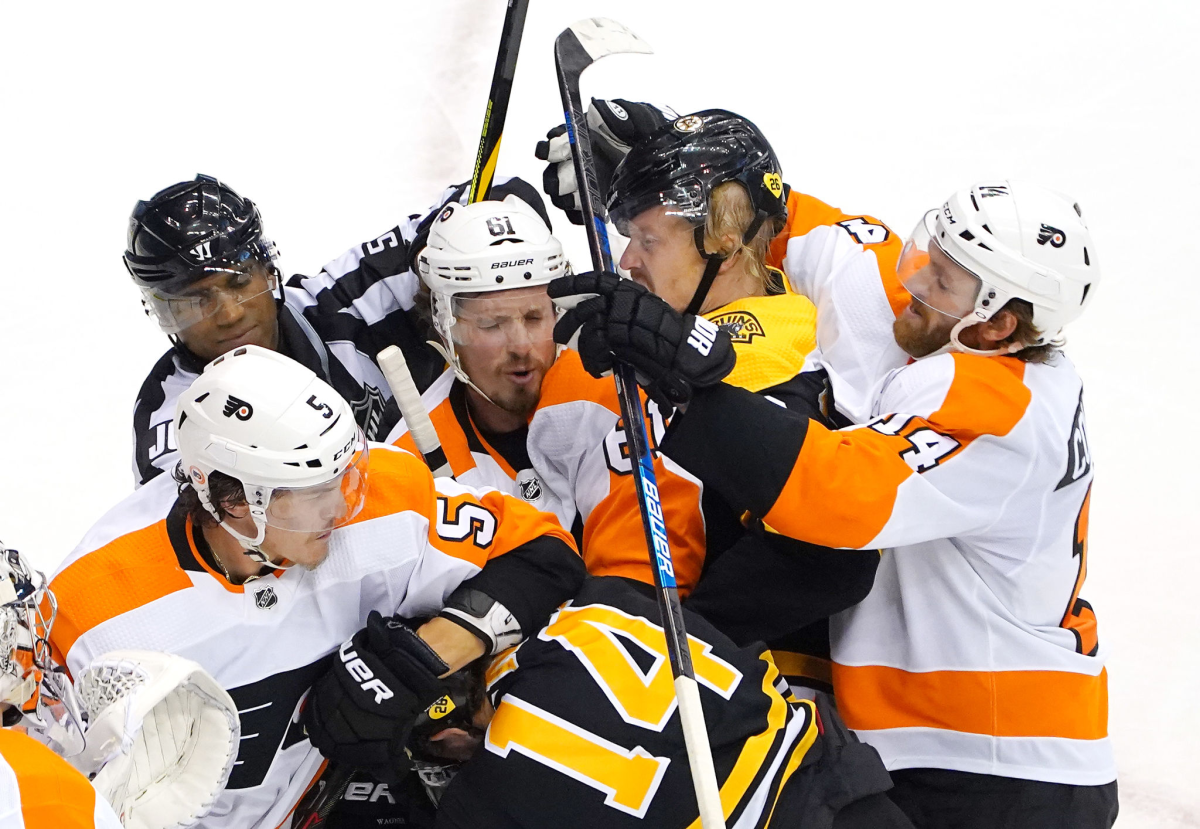
NBC analyst and former NHL goaltender Brian Boucher, one of a few broadcasters inside the bubble, said he didn’t expect players would avoid scrums because of fears related to COVID-19. The league reported no positives among more than 7,000 tests done from July 26-Aug. 1. “The amount of testing that we’ve had and the protocols that are in place, I think everybody feels pretty safe, truthfully,” Boucher said by phone. “This is a real unique situation inside here. You almost feel guilty because you feel like it’s so safe.
“The protocols and the rules that are in place with mask wearing and the amount of hand sanitizer that’s out there and the signs to wash your hands. Everybody is following those rules, and because of that I think it gives us the sense of security that we can resume playing hockey in as normal a setting as possible. I was more questioning: Would players have the same intensity with no fans, and I’ve been pleasantly surprised by the type of intensity that we’ve seen, which is a real tip of the hat to these guys and their professionalism.”
Boucher works in a bubble within the Toronto bubble, encased by clear panels. He was doubtful at first glimpse of his new workplace. “I thought to myself, ‘Man I’m going to look like the pope in this thing,’” he said. “Typically I’m exposed to the play, so you’ve got to worry about sticks and pucks and stuff like that. I don’t have to worry about that now. I don’t hear the same things I normally hear now that I’m inside that glass, but if they start yelling loud enough I can hear what they’re saying.”
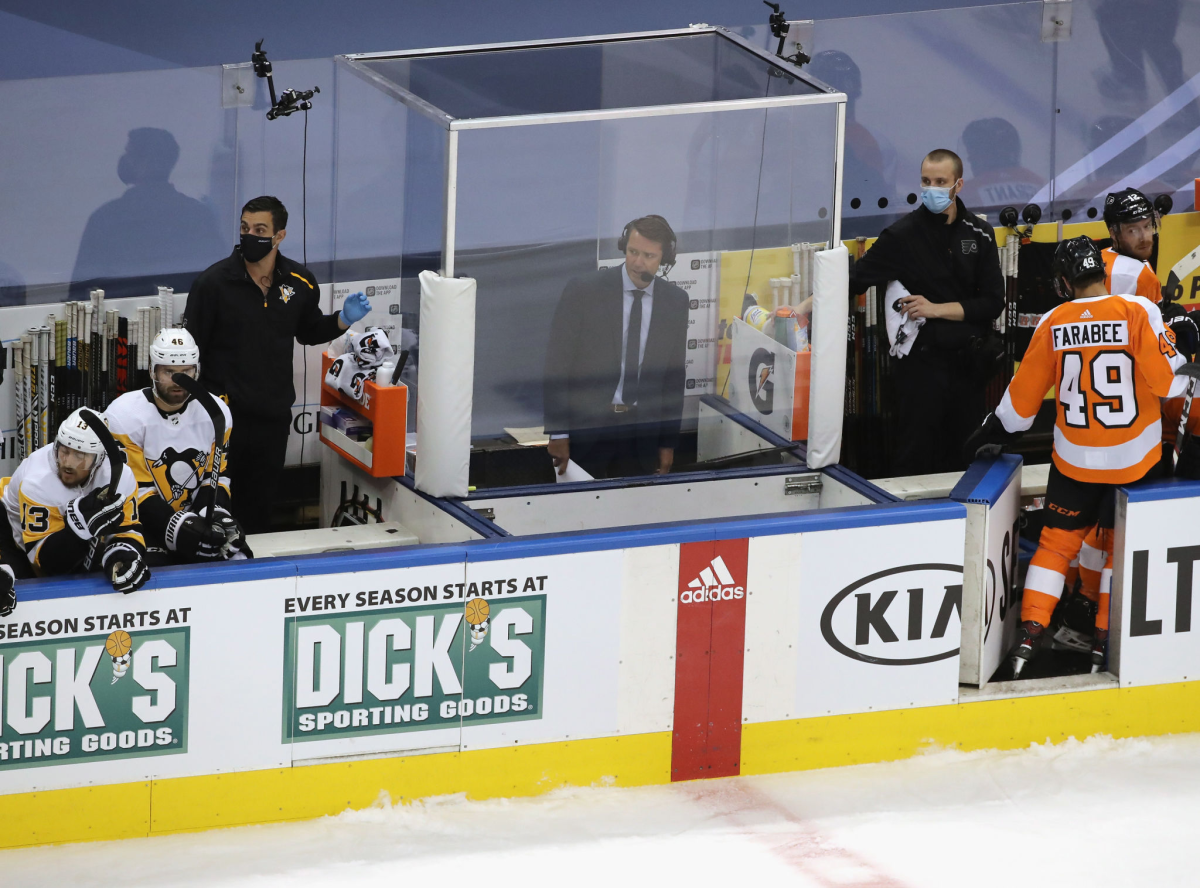
NBC is producing the worldwide TV feed in Toronto; Canada’s Sportsnet produces the feed in Edmonton. Both are using new camera angles and enhanced audio that includes sound recorded by EA Sports at each team’s home rink. “Originally I thought, ‘There’s no way we’ll ever put in fake sound,’ but I think it does help,” John McGuinness, coordinating producer of the NHL on NBC, said by phone. “We haven’t overdone it, I think, to make it sound hokey, but I think it’s a nice mix, not too much and not too little.”
Both networks use a five-second delay. “People are like, ‘Give us a channel with what they’re saying,’ and I have to tell them we can’t do that,” McGuinness said. “First of all, the league won’t allow us to do that, but also for obvious reasons. We can’t just air what these guys are saying and keep our television license.”
Boucher said he believes the Bruins, who struggled in round-robin play, will be fine once their older core players hit stride. He also likes Tampa Bay for its solid start in round-robin play without Steven Stamkos, who sustained an injury related to previous core muscle surgery. Predictions and guesses and the joy of watching elite players excel under duress are pieces of normality worth celebrating when so much else is so different and uncertain.
More to Read
Go beyond the scoreboard
Get the latest on L.A.'s teams in the daily Sports Report newsletter.
You may occasionally receive promotional content from the Los Angeles Times.

